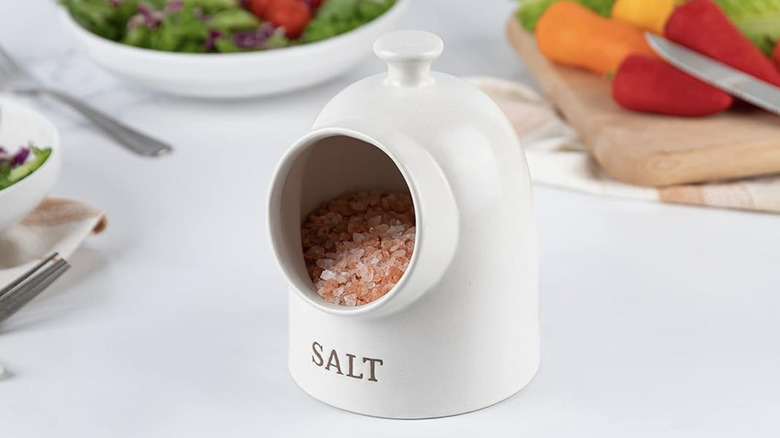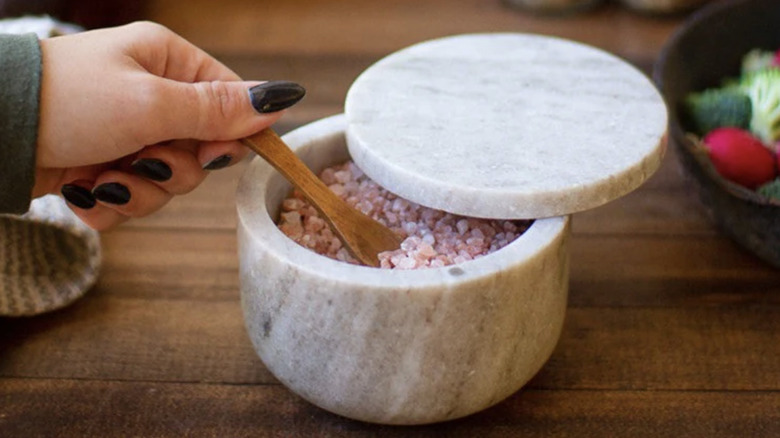What Is A Salt Pig And Why Should You Use It Instead Of A Shaker?
We may receive a commission on purchases made from links.
A name like salt pig leaves a lot to the imagination. Fortunately, it has nothing to do with live pigs, salted pork, or snouts. Despite the somewhat snout-like shape of traditional salt pigs, they're actually just very cute and surprisingly useful containers for holding ordinary or artisan versions of salt. Once embracing these unlikely food companions, some chefs toss out those comparatively boring salt shakers perched on dining tables and kitchen countertops.
A salt pig, also known as a salt cellar, is not just a faddish novelty item for your cooking repertoire. They've been around for ages, with the name reportedly deriving from an ancient Scottish term pronounced like the English word for pig. The word referred to an earthenware container, which is still the material of many salt pigs today. A salt pig is traditionally a ceramic or clay pot for holding salt with an unglazed interior to help absorb moisture and keep salt from clumping.
That's not the only reason to welcome that little salt piggie into your culinary family. The gaping open mouths of most salt pigs are large enough for fingertip access to your favorite salts, allowing quick pinches while whipping up masterpiece meals. Compared to salt shakers or grinders, it helps you more accurately gauge how much salt is actually entering the food. These pigs often come with scoops, and some designs even include a knoblike handle on top for easy table-side passing.
Choosing a salt pig for your needs
Salt pigs come in several designs, some veering from traditional styles and materials. Most still feature an uncovered front opening, typically rounded but often curving upward to prevent debris or stovetop grease splatters from entering the container and contaminating the purity of the salt. However, given the existing familiarity of closed-top shakers and salt grinders, there's nothing wrong with choosing a less snout-ish salt pig with a simple cover on top.
These handy salt box containers can also be made of marble, wood, glass, or bamboo rather than ceramic, clay, or pottery. However, to get the dehumidifying effect, earthenware is still a good choice. The key is choosing a salt pig that's large enough for easy access, especially for those specialty salts that aren't necessarily pre-ground and processed into the texture of ordinary table salt. Those types of salt are increasingly numerous, ranging from kosher and smoked sea salts to coarse Himalayan pink salt, French fleur de sel, Japanese shio salt, and the whispy, flaky Malden salt from the shorelines of England.
A salt pig lets you safely store those salty treasures while keeping them in full view for cooking inspiration. To play into the cheeky name, you can even purchase one designed in the shape of an actual pig. There are also miniature ones for tabletop dining, and they're affectionately called — you guessed it — salt piglets.

